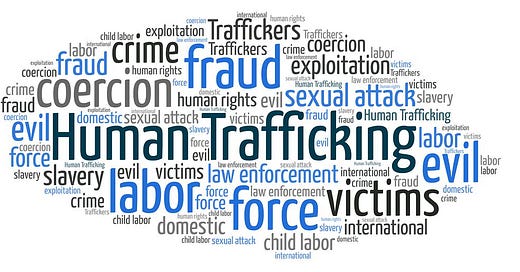In the shadowy recesses of our global village, a chilling reality persists: human trafficking, a sinister enterprise that shackles millions in invisible chains. This week, we cast a stark light on the escalating crisis of this hidden world, where lives are traded like commodities in a marketplace devoid of morality.
Human trafficking, a grim facet of modern-day slavery, is more than just a violation of human rights—it's a widespread epidemic. According to the Global Report on Trafficking in Persons by the United Nations Office on Drugs and Crime (UNODC), the number of detected trafficking victims has tripled over the past 15 years, with children accounting for a third of all victims, a significant increase from previous decades.
The mechanics of this dark trade are ruthless and complex. Traffickers exploit the vulnerabilities of their prey, often using false promises of employment or education to lure individuals from their homes. The International Labour Organization (ILO) estimates that over 40 million people are ensnared in the grips of forced labor, sexual exploitation, and domestic servitude, generating an illicit profit of roughly $150 billion annually for traffickers.
The face of human trafficking is evolving, with technology playing a pivotal role. The internet has become a double-edged sword, offering new avenues for traffickers to exploit their victims through cyber trafficking. The COVID-19 pandemic has further intensified this crisis, as economic hardships and increased online activities have led to a surge in trafficking activities, with the ILO reporting a 20% increase in online recruitment methods by traffickers since the pandemic began.
Despite the growing awareness and efforts to combat this scourge, the battle is far from over. Human trafficking remains a low-risk and high-reward enterprise for criminals, due in part to the lack of stringent enforcement and the challenges in prosecuting trafficking cases. The conviction rates for trafficking crimes are dismally low, with the UNODC noting that in many parts of the world, traffickers are more likely to get away with their crimes than to face justice.
In conclusion, the fight against human trafficking is a test of our collective humanity and moral fortitude. The rising statistics are a clarion call for urgent and sustained action to dismantle the networks that perpetuate this heinous crime. Strengthening legal frameworks, enhancing cross-border cooperation, and supporting the rehabilitation of survivors are critical steps in turning the tide against the trafficking epidemic. As we delve into the depths of this dark world, our resolve must be unyielding in the quest to reclaim the dignity and freedom of every individual ensnared by trafficking's cruel grasp.




